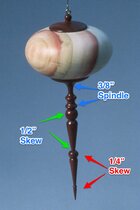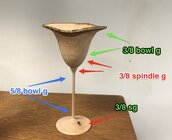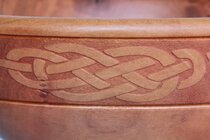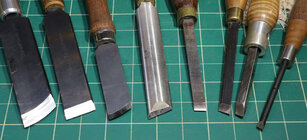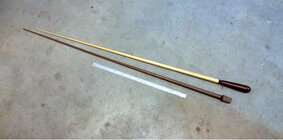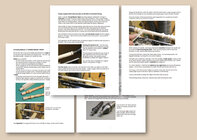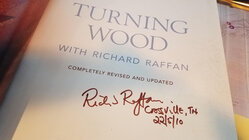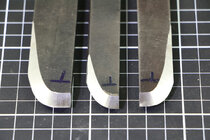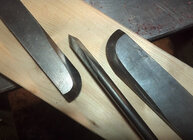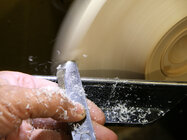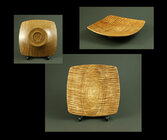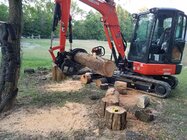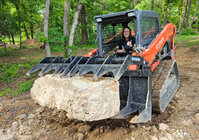I admit it. I am not comfortable using a skew chisel when I need to not screw up. If I used nothing but a skew for a month I would get over that fear, but I would still have the question, when is a skew the best tool for the job?
I visited a long time member of my turning club who has done a lot of exquisite spindle work for a lesson in skew chisel use, and when I explained that I was there to learn how to get a better surface on the outside of the tall hollow forms I have been working on he said that he didn't use a skew that much except for v cuts and finish cuts on the end of spindles. We talked a lot and experimented with different gouges that seemed to work as well for planing cuts as a skew if presented properly, and I came away bemused.
Later the same week I took a workshop with another club member who is adept and confident enough with a skew to venture teaching the subject. At the end of the class I asked him my question about when to use a skew. He hemmed and hawed a bit, said that was a good question, and admitted that when he is making final cuts on a Christmas ornament for sale he usually reaches for a spindle gouge, as it was less chancy. He said that he uses a skew more of late after more practice, but when I asked if it was because it was the better tool or because it was a challenge he didn't really give a straight answer.
I can think of a number of cuts that can be done with a skew; peeling, planing, roughing from a square blank, v-cuts, beads, shallow coves, end trimming, pommel cuts.. Which of these do you grab a skew for and why?
I visited a long time member of my turning club who has done a lot of exquisite spindle work for a lesson in skew chisel use, and when I explained that I was there to learn how to get a better surface on the outside of the tall hollow forms I have been working on he said that he didn't use a skew that much except for v cuts and finish cuts on the end of spindles. We talked a lot and experimented with different gouges that seemed to work as well for planing cuts as a skew if presented properly, and I came away bemused.
Later the same week I took a workshop with another club member who is adept and confident enough with a skew to venture teaching the subject. At the end of the class I asked him my question about when to use a skew. He hemmed and hawed a bit, said that was a good question, and admitted that when he is making final cuts on a Christmas ornament for sale he usually reaches for a spindle gouge, as it was less chancy. He said that he uses a skew more of late after more practice, but when I asked if it was because it was the better tool or because it was a challenge he didn't really give a straight answer.
I can think of a number of cuts that can be done with a skew; peeling, planing, roughing from a square blank, v-cuts, beads, shallow coves, end trimming, pommel cuts.. Which of these do you grab a skew for and why?
Last edited:

